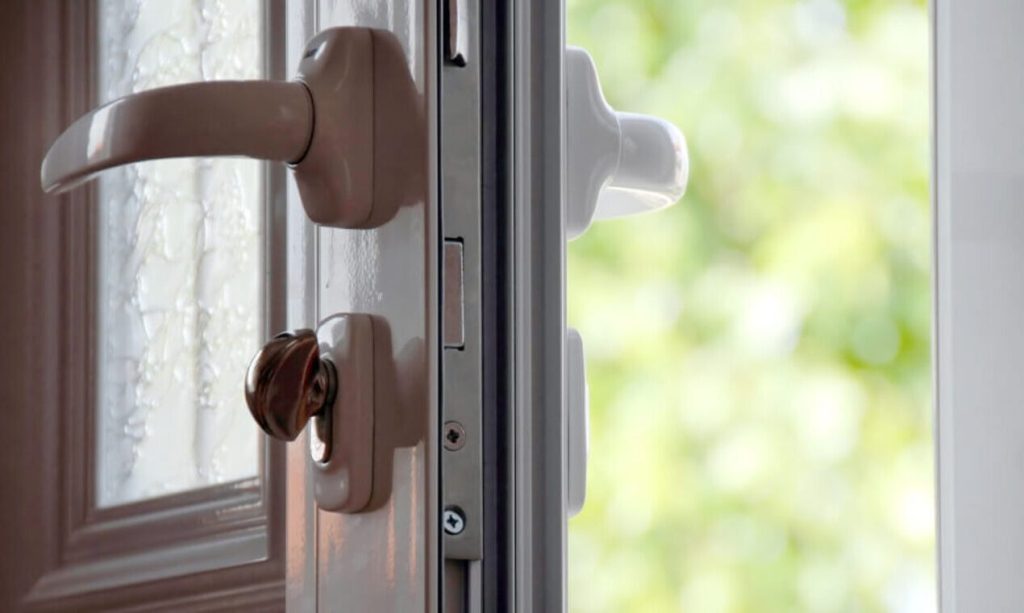Your home is meant to be a place of comfort and security, but an emergency situation can quickly spring up and spiral out of control. As the leader of your household, it’s your responsibility to create a plan of action for some of the most common scenarios.
This guide will take you through the steps necessary to deftly handle six home emergencies.
1. Home Invasion
First, you need to prepare for human threats. On average, more than one million burglaries occur in the United States every year. Your home could be the next target. If you think someone has broken into your house, here’s what to do:
- Arm yourself, but be sure to verify their presence before taking any action.
- Determine if you can escape the house without encountering the intruder.
- If you can’t escape, hide together in a room, turn the lights off and keep quiet.
- Call the police from your hiding place and follow the dispatcher’s instructions.
- If a violent encounter is inevitable, be prepared to use lethal force.
It’s never a good idea to directly confront an intruder because you don’t know if they’re armed or if they have accomplices hiding nearby. Let the intruder come to you and exhaust all other options before using your weapon.
2. Flood
If you live near the coast or another large body of water, a flood is a real possibility that you need to prepare for. Follow these steps if the water starts reaching dangerous levels:
- Start gathering items for your vehicle survival kit if you don’t already have one.
- Sit tight and wait for a local evacuation order.
- Don’t hesitate to leave if the water starts approaching your home.
- Head farther inland or move for higher ground.
- If you can’t evacuate, grab a flotation device, move to the second floor and call emergency services for rescue.
You can’t do much to protect your house from an incoming flood. The only thing you can do is gather as many of your belongings as possible to save them from the waters. But don’t waste too much time. Pack your things and hit the road once the evacuation order occurs.
3. Power Outage
- Pull out a portable light source and check if the rest of the neighborhood lost power.
- Check your breakers to see if a power overload occurred that caused the shutdown.
- Contact your power company for assistance if the problem is unique to your home.
- Keep the fridge and refrigerator closed so they retain their cold temperatures.
- If the outage occurs during the winter, dress accordingly and huddle together to stay warm.
You should also make long-term preparations for a power outage. Electricity will be one of the first things to go during a SHTF scenario. You must invest in alternative energy sources in anticipation of an extended power outage. With these sources, you can still use your appliances if the main power grid goes down.
4. House Fire
- If the flames are small and centralized, try to put them out with a fire extinguisher or smother them with a non-flammable object.
- If the flames have gotten out of control, call 911 and evacuate the house immediately.
- Move in a crouching or crawling position during evacuation to avoid inhaling smoke.
- Once outside, stand far away from the house in case an explosion or collapse occurs.
Similar to floods, there isn’t much you can do to stop a house fire once the flames reach a certain size. The only solution is to contact authorities, evacuate the house and try to save some of your belongings.
5. Burns
Burns are among the most common home injuries because they come from a variety of sources, including chemicals and electrocutions. Regardless of what caused the burn, you should follow these steps to administer proper first aid:
- Evaluate the burn’s severity. First and second degree burns are treatable at home, but third degree burns require professional care.
- Start by running lukewarm water over the affected area to reduce pain and swelling.
- Treat the burn with aloe vera, lidocaine or silver sulfadiazine.
- Cover the burn with a clean and cool gauze pad. Don’t tie the pad too tightly.
There are some common misconceptions about treating first and second degree burns. To be clear, you should never use ice or cold water to treat burns because they constrict blood vessels and interfere with the healing process. You also shouldn’t pop burn blisters. Keep the blisters intact to avoid infection.
6. Deep Lacerations
Another common household injury is a deep laceration from cooking, using tools or doing recreational activities. If you or a family member suffers a deep cut into the skin, you must take immediate action to stop the bleeding:
- Evaluate the wound’s severity and call 911 if necessary.
- Grab a thick gauze pad, towel or dishcloth and apply pressure to the wound.
- Elevate the wound above the heart to reduce blood flow if possible.
- Talk to the victim and keep them calm.
- If you manage to stop the bleeding, wash the wound with water and wrap it with a clean bandage.
Many people get squeamish when large amounts of blood come into the picture. This reaction is normal, but you can’t let it affect your decision making. DO NOT try to make a tourniquet, and DO NOT try to move any exposed bones, muscles or organs.
Prepare for Every Scenario
Every victim of a home emergency thinks the same thing — it can’t possibly happen to them. You can’t afford to have this mentality. You must prepare for every scenario, especially these emergency situations. Knowing the right protocols will help you avoid panicking and just might save your life.


